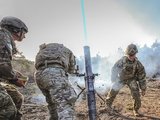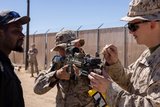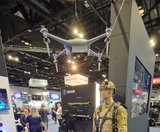US integrates fighter jets in LVC training
Northrop Grumman and the US Air Force (USAF) have successfully completed the integration of fifth- and fourth-generation fighter aircraft in a live, virtual and constructive (LVC) training event, the company announced on 8 August.
The two virtual F-22 Raptor fifth-generation fighters were integrated to ‘fly’ and train alongside four live fourth-generation F-16 Fighting Falcons at the Joint Pacific Alaska Range Complex.
The F-16 aircraft operated out of Eielson Air Force Base. The F-22s were operated from simulators at Joint Base Elmendorf–Richardson in Anchorage.
The air-to-air combat training was carried out to enhance tactical interoperability as part of the Distant Frontier training event.
The live F-16 and virtual F-22 participants were linked by the LVC Experimentation, Integration and Operations Suite (LEXIOS) system developed by Northrop Grumman. Through LEXIOS, virtual aircraft operated by actual aircrew members participate in the same airspace alongside their live counterparts via networked simulators at full security levels. Constructive – simulated forces in a simulated environment – components can also be used to augment the battlespace with a full complement of threats.
LVC training is becoming increasingly relevant for forces operating fifth-generation aircraft. It provides realistic complex threat scenarios and can evolve to meet future training requirements, to ensure pilots are prepared to deal with the full complement and degree of threats they will face in the field.
LEXIOS builds on and integrates elements of the air force's Distributed Mission Operations Network (DMON), a system that enables dissimilar aircraft platforms located across the globe to seamlessly interoperate and train together in a realistic virtual environment.
More from Training
-
![Cubic tailors mortar simulator for the US Army]()
Cubic tailors mortar simulator for the US Army
The company’s mortar trainer received improvements based on soldier’s feedback.
-
![Saab expands footprint in the US]()
Saab expands footprint in the US
The company will operate in two new locations in the coming years to better support US services.
-
![How terrain management capabilities can improve military training]()
How terrain management capabilities can improve military training
This type of tool provides more realistic training easing the incorporation of new scenarios that accurately represent the threats of the battlefield.
-
![I/ITSEC 2024: Australian Army approaches second phase of countermining training]()
I/ITSEC 2024: Australian Army approaches second phase of countermining training
The Engineering Corps has been conducting individual instruction using FLAIM Systems’ Sweeper and should start collective deployments in 2025.
-
![I/ITSEC 2024: Zeiss introduces Velvet 4K SIM projector for night flight simulation]()
I/ITSEC 2024: Zeiss introduces Velvet 4K SIM projector for night flight simulation
The next-generation platform is motion-compatible and can be used in OTW and NVG applications.
-
![I/ITSEC 2024: Saab introduces UAV live training capability]()
I/ITSEC 2024: Saab introduces UAV live training capability
The system can be used to prepare soldiers for both drone offensive operations and CUAS missions.


























